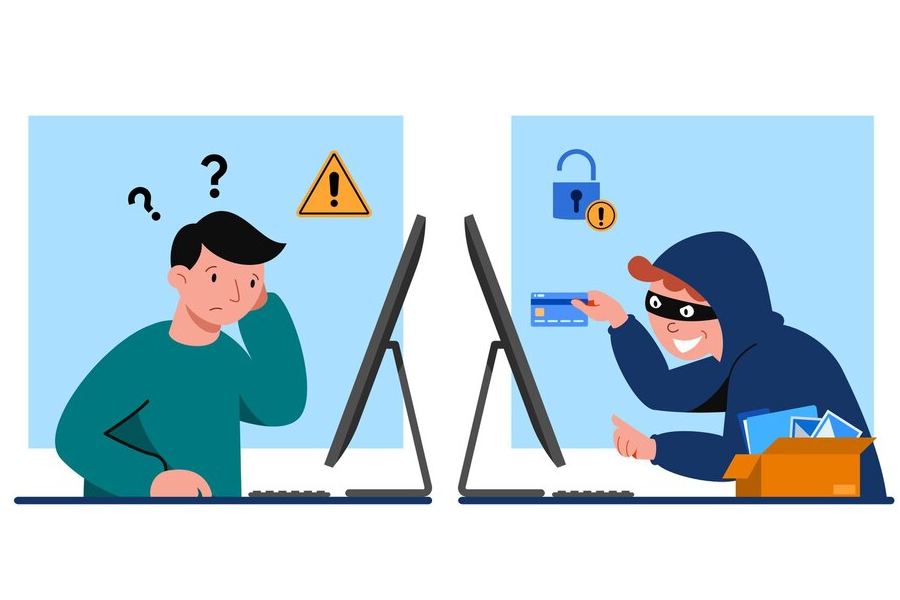
Globalization is the name of the game, and Indian businesses are playing at the high table. Hundreds of thousands of international businesses are primarily based in India, with industries ranging from manufacturing to tech.
If you want your business to be a part of the international market, then you need to know how to receive international payments in India. Read on to learn everything you need to know in this article.
Overview of International Payment Methods In India
India has a massive international business presence, and it’s growing.
According to the Grant Thornton 2023 India International Business Report, India’s global shared services is a market that will reach 91.1 billion (7.57 trillion Rs) USD in the year 2027. There are about 4 billion people directly employed by outsourcing services, while 10 million are employed indirectly.
If you want to ride this wave, then your business must be ready to connect to the rest of the world. You can do that by having a robust international payment system.
These are the methods that will let you receive money from customers outside India to your business or personal account, through various payment processors.
It will give you the following advantages:
- Wider market reach: By accepting international payments, you’re not just a local shop that deals in Indian rupees, local accounts, and domestic payments anymore. Instead, you can make international transactions. Your doors are open to customers worldwide.
- Increased sales: International payments allow you to tap into markets you couldn’t before. More customers mean more sales — simple as that.
- Competitive edge: When you offer easy payment solutions to customers abroad, you stand out from other Indian businesses who don’t. It equips you with all conditions and pushes more business your way.
On the other hand, not integrating these payment methods puts you at a disadvantage. You’ll be stuck competing for local customers and lose customers who want to pay but can’t. You’ll stay on the sidelines while your competitors garner international attention and grow.
Accepting international payments is a must in an increasingly globalized world. The next sections will show you how you can hit this target.
The 6 Best Ways to Accept International Payments in India
Accepting international payments is critical. It lets you expand the scope of your business, cater to more customers, and grow your operations.
There are many different methods of accepting international payments in India, each with varying advantages and disadvantages. This section will examine the different methods for your guidance.
Opening a Bank Account for International Transactions
One of the most reliable ways to accept international payments is to simply open a bank account that handles a swift or wire transfer coming in from outside India. This equips you to deal with different currencies and foreign transactions.
The specific steps for this can vary depending on the bank, but there are general steps that should be universal to all.
Here are the most important steps to take.
- Research your needs. Choose a bank with a good reputation for handling international transactions. Also, take note of their additional features and how they will fit your needs, such as foreign currency cheque collection or a foreign currency demand draft.
- Give them a visit. Visit the branch or their website, and contact them for an application. Most banks have instructions on a webpage. Or, ask an online or on-call representative.
- Follow the required steps. You will likely need to fill out their paperwork and submit all the documentary requirements. For international accounts, the bank will likely ask for your business details and KYC (know your customer) information.
- Submit all the requirements. Submit the application and any required documents, like your business license.
- Get your local bank account. Wait for approval, then get your account details when available. You can now start receiving payments globally.
Opening an international wire transfer capable bank account feels more reliable because it’s backed by an official institution. Sometimes, you can even get mid-market exchange rates that are better compared to other methods.
However, the paperwork for an Indian bank account is often a headache to comply with, wire transfer fees are higher, and transactions take longer.
This method suits you best if your business aims to accept payments through big international transactions and you prefer keeping things traditional with banks.

Foreign Currency Accounts
A foreign currency account is like having a wallet in another country.
It can be maintained by a bank in the home country (onshore) or a bank in another country (offshore). It lets you hold and manage your client’s local currency directly, saving you from the hassle of constant conversions.
Foreign currency accounts are different from simply opening an internationally-capable bank account. It specifically holds multiple currencies and may involve higher transfer fees and minimum balance requirements.
To open one, you typically go to a bank and follow the same steps as opening a bank account.
This method holds multiple currencies and might have cheaper currency conversion rates. However, it often requires a minimum balance. It also has limited interest.
Opening a foreign currency account suits businesses that frequently deal in foreign currencies, like exporters or those involved in global trade.
PayPal: Setting Up and Using the Platform
PayPal is one of the most popular international payment platforms around. A PayPal account connects to your bank accounts – it can receive currencies and automatically convert them to your currency of choice.
It’s a virtual account that accepts international transfers, converts international currencies, and with minimum requirements to start receiving money.
Here’s a general guideline.
- Ready a bank account. Make sure that you already have a bank account beforehand, as this is a main requirement. This is where PayPal will send your money.
- Go to PayPal. Visit the PayPal website or app. Hit “Sign Up” and choose the Business Account option.
- Fill in the required details. Fill in your business details and create a secure password. For PayPal, ensure that your PayPal details match your bank account details, or you might face connection problems.
- Connect your bank account. Connect your bank account to PayPal. Ensure that the connection method you input is valid.
PayPal is widely recognized and trusted — your customers will feel comfortable transacting through this method. It also offers smooth transactions with a wide range of available currency conversions.
However, the transaction fees often feel limiting, especially for large amounts. You must also verify your account properly, or PayPal will hold your money.
PayPal is perfect for small to medium businesses diving into the international market.
Remittance Services
Like Paypal, various money transfer providers in India allow people to make overseas payments to you.
Often, these are physical locations that accept money in one branch from another country, process the records through the global money transfers market, and then let you withdraw the amount on your side.
Here’s the general process.
- Go to the remittance service. Your customer will go to the branch nearest their location and say you want to make international money transfers.
- Provide the necessary details. They’ll often need to provide details of the recipient (you, or your business), like complete name and mobile number.
- Pay the fees. The fee amount will depend on the amount being sent, be careful of hidden fees in your transactions.
- Receive the money. You will receive a message to cash out the amount at a branch near you.
A good money transfer provider has the reliability of traditional banks. Often, these places are well-established and popular, so most people will know how to use them. You also don’t need to create accounts to receive money.
However, these offline payment options can be very troublesome.
Your customer will have to visit a physical location, line up, fill in your details, and pay the fees. Not to mention, the fees grow the larger the amount. The transaction process also typically takes a day or two.
These services are ideal for businesses that require reliable transactions of big amounts of money, without having to pass through traditional institutions like banks.
Online Payment Gateways
Payment gateways are e-commerce applications that authorize transactions between you and your international customers without the headache of traditional banking methods.
They act as a virtual POS (point of sale) terminal for online transactions. They handle e-commerce transactions exclusively.
Here’s how you can use them for online payments in India:
- Pick the best. Choose a reliable gateway like Razorpay or Instamojo, reliable partners are less likely to have a hidden fee somewhere.
- Register your e-commerce. Register your business on the chosen gateway’s platform.
- Integrate. Integrate the gateway into your e-commerce website using the provided tools.
- Customize. Match the payment processing options to your business needs.
Online payment gateways can handle a lot of payment methods, from credit card payments to digital wallets. They are also fast, easy, and secure — great for the customer experience.
However, the fixed fees are often significant. Also, they are only often limited to e-commerce transactions, meaning your customers must have e-commerce-enabled debit cards and wallets, and know how to transfer money with them.
This method is perfect for businesses with a strong online presence, especially those catering to international customers.
Cryptocurrency Payments
Cryptocurrency payments are the tech-savvy rebels of the financial world.
A new invention, this method seeks to disrupt the typical financial structures in the world through a technology called the blockchain.
Essentially, this means that your transactions go directly from your customers’ computers to your computer, without passing through traditional institutions like banks or centralized handlers like PayPal or Wise.
If this sounds good, this is a rough outline of the steps to enable cryptocurrency payments:
- Create a cryptocurrency wallet. Wallets are where you store your cryptocurrency, before passing it through a processor. You need a crypto wallet for your business if you want to send or receive payments through crypto.
- Select a processor. Choose a reliable cryptocurrency payment processor like BitPay or CoinGate. Often, these payment solutions will also have their version of cryptocurrency wallets, although these will be less versatile.
- Set up an account. Fulfill all account requirements, and integrate the payment gateway into your website.
- Display your channels. Show the accepted cryptocurrencies and QR codes on your website so customers know where to send money. Start accepting international payments.
- Be on the lookout. The cryptocurrency world is volatile. Monitor cryptocurrency market trends for potential conversion strategies.
Cryptocurrency transactions are much faster compared to traditional methods, as they operate on the speed of the internet. You also don’t pay intermediary bank charges, you pay a fixed fee which is lower compared to banks and other transfer providers.
However, the entire process is much more complex than simply filling out a bank transfer. It might alienate customers who are not educated about the process — which are most people.
Thus, cryptocurrency payments suit businesses with a cutting-edge image and a global customer base who already know how to operate digital currencies.
Compliance, Legal, and Tax Considerations
For Indian businesses looking to receive international payments, there are several compliance and legal considerations to keep in mind.
Here is what to consider:
- Compliance with India’s foreign exchange regulations such as the Foreign Exchange Management Act (FEMA) and its delegated legislations is essential for handling foreign currency transactions.
- Specific sectors (like pharmaceuticals, healthcare, finance, and telecommunications) also have specific regulations. Foreign companies or customers might need to undergo steps or submit additional requirements when transacting with any business.
- Always provide supporting documentation such as bank statements, Income Tax Assessment Orders, and Form A2 for remittance.
- Examine how you can comply with GST (Goods and Services Tax) regulations for international transactions. This will likely be a case-by-case business and will depend a lot on your offerings and type of business.
Remember to always maintain thorough records to meet reporting requirements and to better calculate taxes and fill up necessary forms.
Alternatively, you should talk to an accountant. A business accountant, especially one specializing in accepting international payments from international clients, can give advice specifically for your business — and even help you save money.
Ensuring Security and Fraud Prevention
Scams are rampant – robust security and fraud prevention methods are not just optional, but a necessary step to take if you want to transact internationally.
Enhanced security ensures safe transactions, shields sensitive information from unauthorized access, and even improves customer perception of your brand.
Here is what you can do:
- Implementing secure payment gateways. Payment gateways are present in any e-commerce business setup. To secure, choose reputable payment service providers, use secure sockets layer (SSL) protocols, and enable two-factor authentication for transactions.
- Employing encryption technologies. The data that you send and receive could also be at risk. Use end-to-end encryption, Transport Layer Security (TLS), and conduct regular audits.
- Adhering to regional data protection laws. Familiarize yourself with data protection regulations in your area, and communicate your privacy policies. Obtain explicit consent before collecting and processing customer data.
Enhancing security is critical, especially if you plan to play internationally.
There are tons of scams originating from and affecting India, and you must do your best to conduct your due diligence. The potential consequences don’t just include lost revenue, it can also involve legal complications and even damaged customer trust.

Final Thoughts
The world is becoming more globalized, and your business can benefit from it. Instead of being limited on Indian soil, you now have a chance to play in the international market.
But you can’t do this without a good payment provider. In this article, we tackled everything you need to know about receiving international payments in India. Save this as a reference while you implement a robust system to help your business grow.
Frequently Asked Questions
What is the difference between a money transfer and a wire transfer?
There is money transferred both ways, the difference is in the method. A “money transfer” moves money internationally through accredited remittance centers or institutions. A wire transfer uses a regular bank account or a business account. These bank transfers are wire transfer instructions and incur an international wire fee (also called a wire transfer fee).
What is an exchange rate and how do they affect my payments?
A currency exchange rate is the value of one country’s currency compared to another’s. When you transfer funds between countries, exchange rates dictate how much your recipient will receive. The currency with the weaker exchange rate will get “less” money, or less buying power. The difference between the buying and selling rates is called the currency exchange spread.
What’s the best way to receive international transfers?
The best way to handle an international payment depends on your business needs. Evaluate what payment method your international customers prefer, whether they are used to sending money online, or they go through Indian banks.